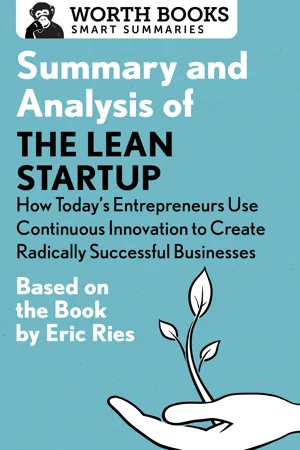
Summary and Analysis of The Lean Startup: How Today's Entrepreneurs Use Continuous Innovation to Create Radically Successful Businesses
Based on the Book by Eric Ries
- 30 Seiten
- English
- ePUB (handyfreundlich)
- Über iOS und Android verfügbar
Summary and Analysis of The Lean Startup: How Today's Entrepreneurs Use Continuous Innovation to Create Radically Successful Businesses
Based on the Book by Eric Ries
Über dieses Buch
So much to read, so little time? Get the key points of The Lean Startup —the bestseller about creativity, efficiency, and building a sustainable business. Through successes and failures with tech companies, Eric Ries began to realize there was a better way to develop a startup. Using his experiences, as well as valuable lessons learned from other industries, Ries identifies the difficulties a startup faces and how to build a more efficient—and successful—business. In the end, all of his advice comes down to saving the most important resource of all: time. This summary of that bestselling business book covers such topics as:
- How to shorten project-development cycles
- Validated learning and rapid scientific experimentation
- Measuring progress accurately
- Identifying your customers' desires
- How to adapt to changing circumstances quickly
With chapter-by-chapter overviews, definitions of key terms, context and analysis, important quotes, and other features, this summary and analysis of The Lean Startup is intended to complement your reading experience and bring you closer to a great work of nonfiction.
Häufig gestellte Fragen
Information
- Anyone, anywhere, can be an entrepreneur. Contrary to the popular definition, Ries defines a startup as any group attempting to make a new product or service in an unpredictable environment. Thus, anyone running such an enterprise is an entrepreneur.
- The management of the startup is as important as the product itself. The concepts of “entrepreneurship” and “management” cannot be separated.
- Since startups are inherently untested, being new products or ideas, they require a continual state of learning in order to be successful. Ries uses the term “validated learning” to describe this cycle of testing.
- There is a standard process that startups should follow: “Build-Measure-Learn.” Ries believes companies should first make a product, see how consumers react to it, and then take action in response. This cycle continues throughout the building of the business.
- No matter how exciting and fresh its product is, a startup needs to do the dull work of quantifying progress.